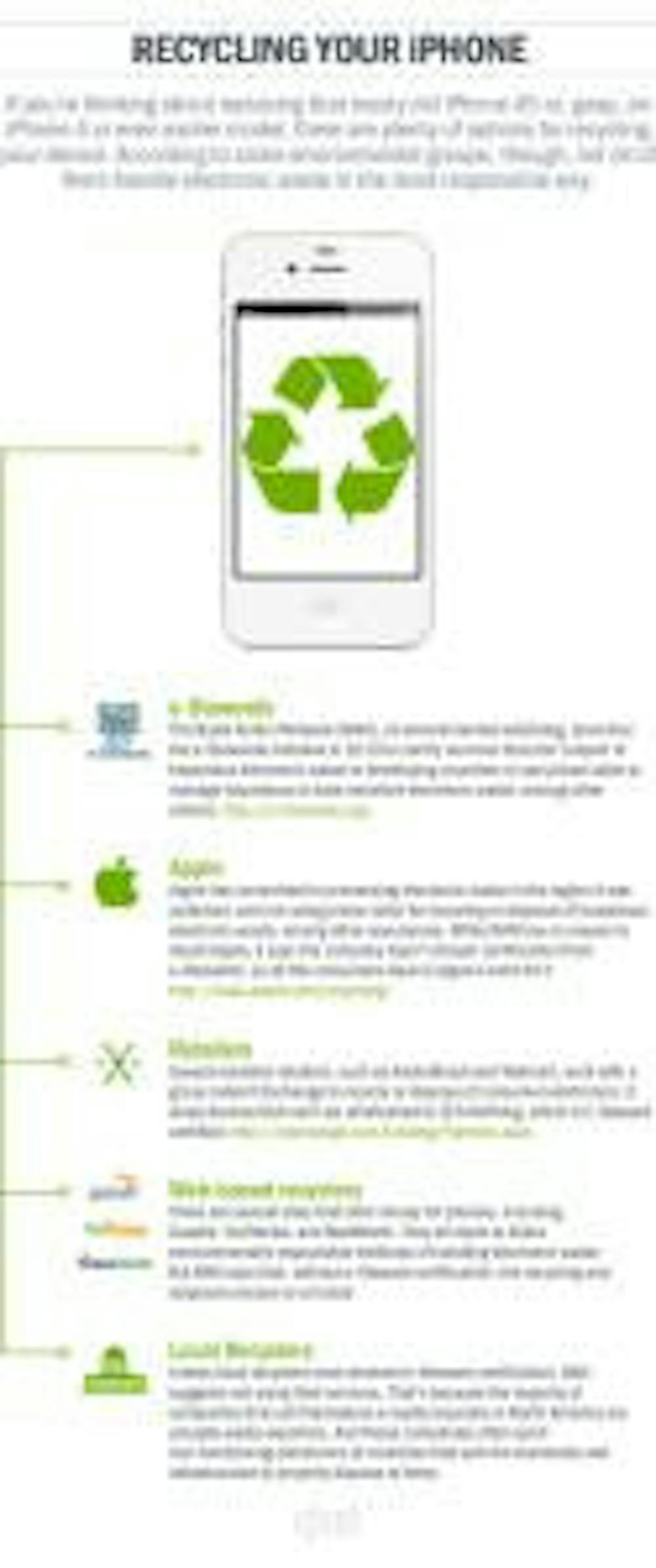
College students today make up a generation captivated by technology. The leader of this wired youth movement is, of course, the all-powerful smartphone, and other Apple products that surround it.
While we’re all mesmerized by games, social media and other wonderful apps a smartphone offers, little thought is ever given to how such a miraculous piece of technology fits in such a tiny phone. How do they do it?
The answer to that question is also the answer to some other great technological advancements. Among them “green” technologies such as wind turbines and hybrid cars. If you have ever taken a chemistry class, you may already know the answer: they’re called rare-earth metals. And they happen to not only be rare, but also some of the most adaptive, yet toxic, materials on our planet.
Smartphones use three main rare earth metals: neodymium, europium and cerium, for speaker vibrations, screen colors, and polishing. They also use six other rare earths for various parts and pieces.
The problem with mining rare earth metals lies in the massive amounts of earth and other minerals that must be removed in order to obtain even a small amount of rare earth metals. Then the rare earths are removed from that materials using harsh chemicals and the remaining heavy metals and refining chemicals are left to sit in large, open air and often unlined “tailing ponds.” These ponds can then leak the heavy metals and chemicals into our groundwater tables. According to Scientific American, pollution from rare earth tailings has been shown to cause teeth and hair loss, crop failure, deaths of livestock as well as lung and pancreatic cancer.
One of the largest centers of rare earth mining is China, and it suffers heavily from these environmental and health hazards.
However, one US company, Molycorp, is pioneering a more environmentally friendly and health conscious way of extracting the metals from mined material. Their process involves boiling material until the rare earth metals rise to the top and then “skimming” them off the top. The excess liquid tailings will then be cooled and condensed into a cement-like paste and paved into lined grooves in the ground. While still not an ideal solution, forming the tailings into a solid rather than a liquid will prevent a considerable amount of groundwater pollution.
Much like the innovation Apple has brought to the technology industry, Molycorp is bringing ambitious and more ecologically friendly techniques to a resource intensive industry like mining with the hope that these methods can continue to be improved upon. In the meantime, what can you do to help prevent rare earth pollution after the smartphone is out of the package?
Recycling is one viable option. Many retailers and non-profit groups will now actually pay you to bring your smartphone back in for recycling. However, the best way to make a difference is use your smartphone (see the included illustration for various places to take your smartphone for recycling) as long as you can, without running out to buy the newest model as soon as it hits shelves. With less constant demand, fewer smartphones are produced, and less rare earth metals need to be extracted.
Remember when it comes to your smartphone: “if it ain’t broke, don’t replace it”.
For more information:
“Digging for rare earths: The mines where Iphones are born”- Jay Greene; Scientific American; http://www.scientificamerican.com/article.cfm?id=digging-for-rare-earths-the-mines-w-2012-09
“The environmental pitfalls at the end of an Iphone’s life”- Jay Greene; CNET News; 09-26-2012; http://news.cnet.com/8301-13579_3-57520123-37/the-environmental-pitfalls-at-the-end-of-an-iphones-life/
